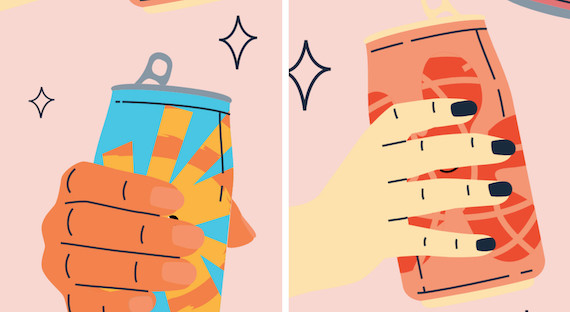It seems too that convenience and price point have struck a chord with younger drinkers.
“[There is] rising demand for easy to carry, single-serving beverages driven by Gen Z and to some extent Millennials as well,” says Gregory Castells, president and founder of Licence IV Wine, a California-based brand with a focus on fine French wine. It offers a canned rosé produced by Bastide de la Ciselette, a Muscadet sur Lie produced by Domaine du Grand Mouton and will soon be adding a biodynamic Grenache produced by Domaine du Seminaire to the range.
“The quality is the most important thing we can offer,” he says. “The expectation from this generation is access to better wines, whatever the format. Ten years ago, nobody thought that a high-quality wine would come with a screwcap, for example – today some of the best wines in the world are in screwcaps.”
CHANGING PERCEPTIONS
For the most part, screwcap wines have been successful in changing perceptions, and canned wines have a similar mission. In both instances, it’s a job that is made easier when the liquid is good.
“Cans as a format have come on leaps and bounds in the past 10-20 years and so there are a lot fewer issues surrounding quality than there were previously,” says Laventure. “The most satisfying way to [change perceptions] is to offer consumers a sample and let them taste for themselves. At a recent exhibition, there was an occasion where five ladies approached our bar and upon getting closer, and realising that our wines were in cans, they cancelled their order stating that ‘all wines in cans taste metallic’. We gave each of them a sample and very quickly the five drinks were back on order.”
If canned quality is now achievable for brands, it’s easy to see a benefit to cans. They’re lightweight, convenient, non-breakable, there’s no risk of lightstrike, they’re fully recyclable and less costly to chill and transport.
“Gen Z and Millennials are greener, and cans are recycled at a much higher rate than glass,” says Castells. “The shelf life of small glass bottles is also much shorter than cans. We are working with wines that have lower alcohol, higher acidity and it’s crucial that we trap the freshness of the wines in the can and keep it as long as possible.”
Wine has been a category that has largely been slow to incorporate lower-impact packaging innovations, but while the sustainability benefits of aluminium offer benefit over glass, it may not be a connection that consumers will automatically make.
“It’s widely understood in the wine industry that its biggest carbon footprint arises from the usage, and transport, of wine in glass bottles,” explains Halstead. “However, from a consumer point of view, glass bottles are overwhelmingly seen as environmentally friendly – easy to recycle, natural (not plastic). So, there isn’t a strong demand pull from the market for alternatives to glass.”
Consumers not recognising a key benefit of aluminium packaging is just one challenge that the format faces and despite impressive recent growth, there are still more opportunities for canned wine if brands can communicate the right pitch. Perhaps the next great step for the format is to prove its use as more than a convenient way of drinking wine outside.
“Wine is fundamentally a social beverage which is indelibly linked to the 75cl glass bottle,” says Halstead. “Even in markets where wine in cans is more widely distributed, such as the US, it’s only being used by a small fraction of the population. The key challenge will be whether wine in cans can expand its remit to a more quotidian usage occasion, as a way of portion control in a household that is looking to limit its alcohol consumption.”
It’s unlikely aluminium will ever surpass glass as the default wine packaging, but that’s not the point. Canned wines offer a convenient, single-serve, sustainable alternative at a lower price than an entire bottle, and now those benefits are backed up by quality liquids. That fact in itself means the format is destined to only grow in popularity.




